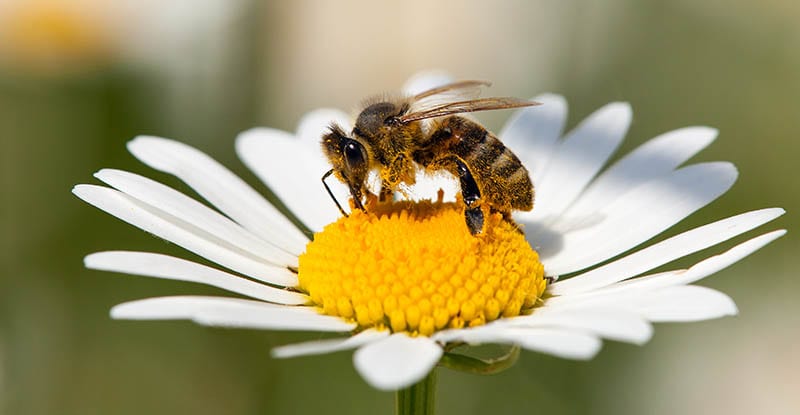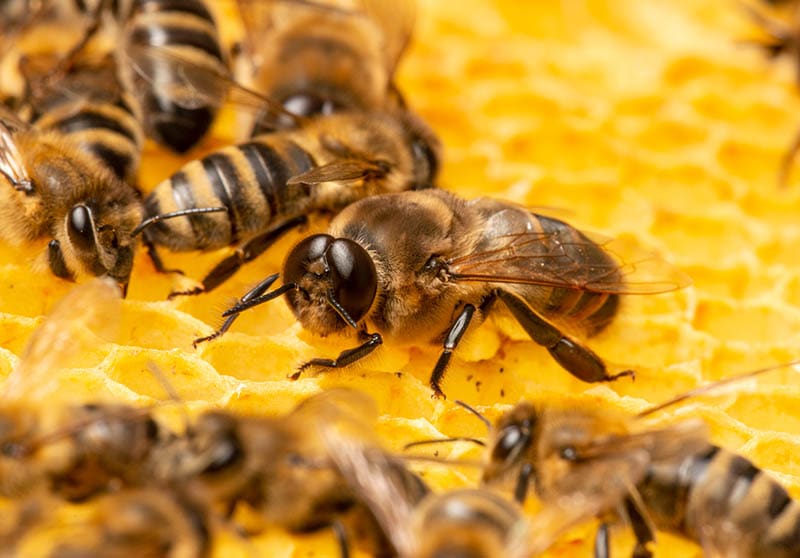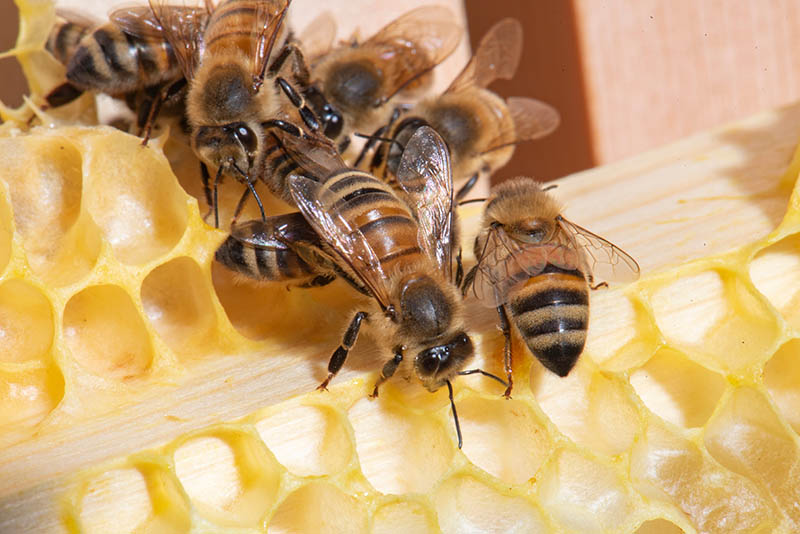What Is the State Insect of Wisconsin? How Was It Decided?
-
Cassandra Kyser
- Last updated:

It’s a long-standing joke that Wisconsin’s state insect is the mosquito. The actual state insect isn’t a pest but rather contributes to agriculture and the economy in a big way—the honeybee. Learn more about the honeybee below, including how it was chosen to be the state insect.
Who Chose the Honeybee for Wisconsin’s State Insect?
In 1977, elementary school students in Marinette were learning about the legislative process. They hatched a plan to ask Wisconsin’s lawmakers to consider the honeybee as the state insect. These students got a little help from the Wisconsin Honey Producers Association (WHPA).
It didn’t take long to convince the state legislature, as the bill was passed that same year. Other contenders for Wisconsin’s state insect were the dragonfly, monarch butterfly, ladybug, and, yes, the mosquito.

The 4 Fun Facts about Wisconsin Honeybees
- The WHPA crowns a Wisconsin Honey Queen each year. Women ages 18 to 24 are eligible to compete for the title. The winner commits to a year of touring the state, educating the public about beekeeping and honey production.
- There’s a lot of talk about Wisconsin’s dairy industry, but honey production is big, too. Wisconsin’s 45,000 bee colonies produce 2.25 million pounds of honey annually. Hobby beekeepers with four or fewer colonies are not included in these figures.
- Wisconsin’s state insect isn’t even native to North America. Honeybees were brought here from Europe in the 1600s.
- The scientific name for honeybees is Apis mellifera.
What Other Bees Live in Wisconsin?
In addition to the honeybee, the University of Wisconsin has identified 12 other bee species in the state. Most people are familiar with the fuzzy bumble bee, but many of the other bees are not well known. Mason bees are solitary insects, nesting alone in hollow plant stems. And the adaptable cuckoo bees are unwanted guests that make themselves at home in other bees’ nests.

Do Wisconsin Honeybees Sting?
Yes, Wisconsin honeybees can sting people and animals. Female worker bees sting when they detect a threat while out gathering pollen. However, you’ll never be stung by a male drone bee. They lack a stinger and stay in the hive with the queen bee.
Stinging lets you know you’re not welcome near a hive, but it serves another purpose, too. A stinging honeybee releases a scent that notifies nearby honeybees to be on alert for danger.
Honeybees can only sting once, and they die afterward. When honeybees sting, they leave their stinger behind in their victim’s body. The stinger is a vital body part that a honeybee can’t live without. They effectively rip their body into two parts when they fly away.
What Are Some of Wisconsin’s Other Official Symbols?
Several other animals are honored to be a Wisconsin state symbol. The robin is the state bird, while the badger is the state animal. White-tail deer are the wildlife animal, and the American water spaniel is that state dog.
Final Thoughts
The honeybee has been Wisconsin’s state insect since 1977. The state legislature passed the bill after prompting from elementary school students and the Wisconsin Honey Producers Association. Apis mellifera is one of 13 bee species found in the state, and its contribution to agriculture and the Wisconsin economy is invaluable.
- https://www.wihoney.org/honey-queen/
- https://www.pbs.org/newshour/science/honeybee-sting-kill-bee
- https://www.orkin.com/pests/stinging-pests/bees/honey-bees/honey-bee-sting
- https://www.nass.usda.gov/Statistics_by_State/Wisconsin
- https://www.usgs.gov/faqs/are-honey-bees-native-north-america
- https://hort.extension.wisc.edu/files/2016/08/WI-BEE-IDENTIFICATION-GUIDE.pdf
Featured Image Credit: Daniel Prudek, Shutterstock
Contents
